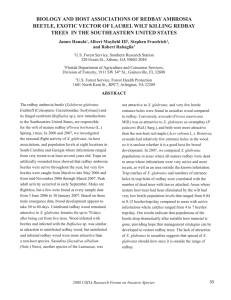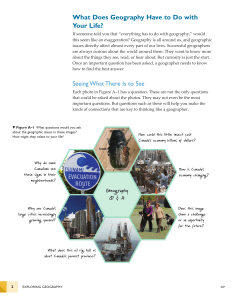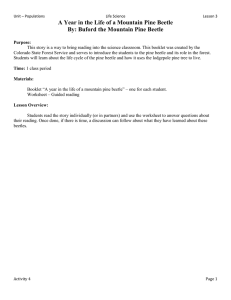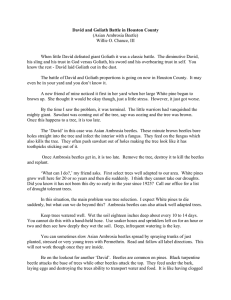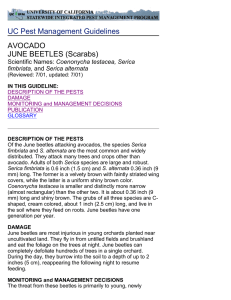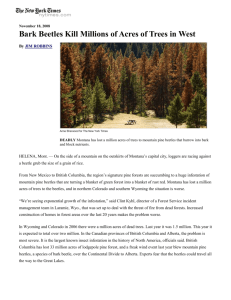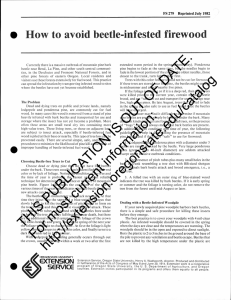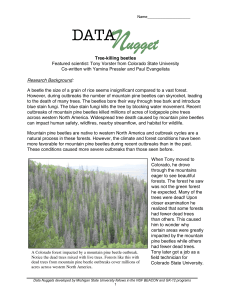Mountain Pine Beetles
advertisement
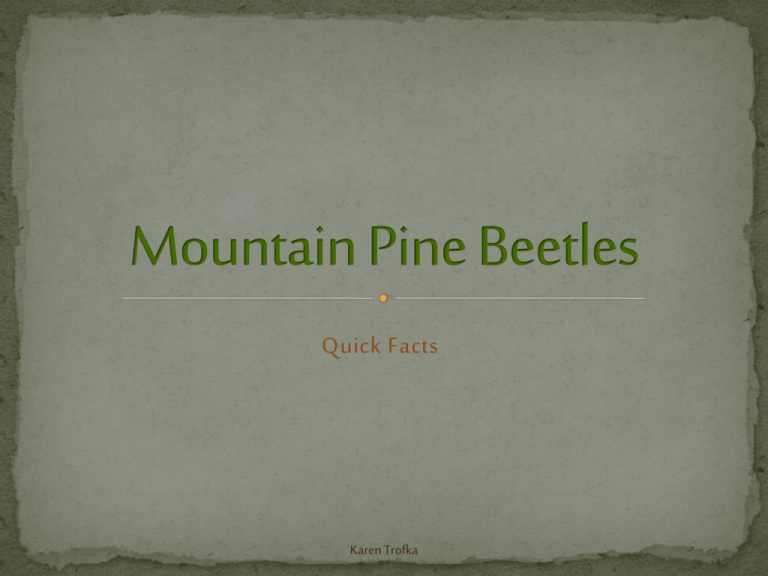
Quick Facts Karen Trofka Scientific Name: Dendroctonus ponderosae Size: 1/8 -1/3 inch Native to forests in western North America Have one year life cycles Woodpeckers are their natural predators Photo taken by Joseph Trofka Female tunnels under bark of tree Mate Form vertical tube, or egg gallery, containing about 75 eggs Eggs hatch and larva tunnel away from the egg gallery Remain under the bark during the winter Become pupae June-July Mid-June to September leave trees as adults Periodic out breaks can kill millions of trees Current outbreak has killed 1.5 million acres of trees in Colorado Pine beetles attack large and weak or stressed trees Mainly affect ponderosa, lodgepole, scotch, and limber pinetrees Affect Bristlecone and pinyon pines as well Photo taken by Joseph Trofka Map from http://snr.unl.edu/invasives/images/mountain%20pine%20beetle%20map.jpg Tree become yellow or red 10 months After a successful attack Pitch tubes are created from the beetles tunneling Blue stain the on in inside of the wood is a fungus from adult beetles that help beetles kill the tree All photos taken by Joseph Trofka Wood remains structurally sound until five years after attack and can be used for building Used as fuel for pellet stoves Bio-fuel Firewood Biochar Photo taken by Karen Trofka "Can 'biochar' save the planet? " CNN Video. CNN. 30 Mar. 2009. biochar.org. Web. 29 Mar. 2010. Helman, Christopher. "Turning Dead Trees Into Green Heat." Forbes.com. N.p., 2 Sept. 2009. Web. 12 Mar. 2010. Leatherman, D.A., I. Aguayo, and T.M. Mehall. "Mountain Pine Beetle." Colostate.edu.Colorado State University, Apr. 2007. Web. 12 Mar. 2010. Moscou, Jim. "Beetlemania." How the Pine Beetle is Destroying Colorado Forests. Newsweek, 2008. Web. 27 Apr. 2010. <http://www.newsweek.com/id/148297/ page/2>. Trofka, Joseph. Interview about Mountain Pine Beetles. Private Residence. 28 Mar. 2010. Interview.

